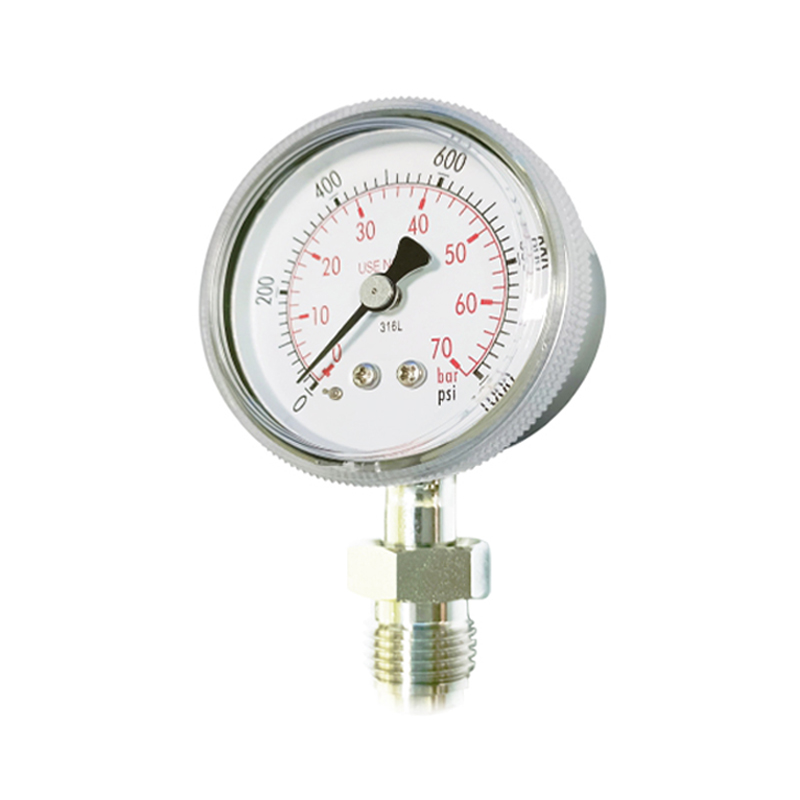
7 月 . 27, 2024 22:28 Back to list
Understanding the Functionality and Applications of Diaphragm Pressure Gauges in Various Industries
Understanding Diaphragm Pressure Gauges
Diaphragm pressure gauges are essential instruments used in various industries to measure and monitor the pressure of gases and liquids. Their design offers significant advantages, particularly in applications where corrosive media or high temperatures are present. This article explores the functionality, applications, and benefits of diaphragm pressure gauges.
What is a Diaphragm Pressure Gauge?
A diaphragm pressure gauge is a pressure measurement device that utilizes a flexible diaphragm to detect pressure changes. When pressure is applied to one side of the diaphragm, it deforms, creating a mechanical movement that is translated into a readable value on the gauge. This type of gauge is particularly effective for measuring low to medium pressures.
The components of a diaphragm pressure gauge typically include an elastic diaphragm, a housing, a pointer mechanism, and a scale. The diaphragm is often made from materials like stainless steel, which provides durability and resistance to corrosive substances. The gauge can be filled with oils or other dampening fluids to enhance performance and accuracy, especially in fluctuating pressure environments.
Applications of Diaphragm Pressure Gauges
Diaphragm pressure gauges are utilized in a wide range of applications across various sectors
1. Chemical and Petrochemical Industries In this sector, the gauges measure the pressure of corrosive chemicals and gases. Their robust construction ensures that they can withstand harsh conditions without compromising accuracy.
2. Pharmaceuticals Maintaining precise pressure levels is crucial in the pharmaceutical industry. Diaphragm gauges help in monitoring the pressure in various processes, ensuring product safety and compliance with regulatory standards.
3. Food and Beverage Industry These gauges are used to control pressure in food processing and packaging operations. Their sanitary design minimizes the risk of contamination, which is vital in food safety.
4. Water Treatment Facilities Pressure gauges play a significant role in monitoring water systems, ensuring the correct pressure is maintained for effective filtration and distribution.
about diaphragm pressure gauge product

5. Gas Distribution Systems Diaphragm pressure gauges are employed in measuring gas pressures in pipelines, providing essential data for safe and efficient operation.
Advantages of Diaphragm Pressure Gauges
Diaphragm pressure gauges offer several advantages, making them a preferred choice in many applications
- Corrosion Resistance Their ability to resist damage from corrosive substances extends their lifespan and reduces maintenance costs.
- Accuracy These gauges provide accurate readings, which are essential for critical processes where precise pressure control is necessary.
- Low Maintenance The robust design of diaphragm gauges requires less frequent calibration and maintenance, which can save time and operational costs.
- Flexibility Diaphragm pressure gauges can measure a wide range of pressures, making them versatile instruments for any facility.
- Safety In applications involving hazardous materials, diaphragm gauges can help ensure safe operations by providing reliable pressure readings that prevent over-pressurization.
Conclusion
Diaphragm pressure gauges are vital instruments that contribute significantly to various industrial processes. Their unique design and operational advantages make them ideal for applications involving corrosive media, sensitive processes, and rigorous performance standards. By providing accurate and reliable pressure measurements, diaphragm pressure gauges play a crucial role in enhancing safety, efficiency, and compliance across multiple industries. As technology continues to evolve, these gauges are likely to incorporate advanced features, further improving their utility in modern applications. Whether you are involved in manufacturing, processing, or utility management, understanding the importance of diaphragm pressure gauges can lead to better decision-making and operational excellence.
-
High-Precision 5 Valve Manifold Differential Pressure Gauge Suppliers
NewsApr.29,2025
-
High-Precision Diaphragm Vacuum Pressure Gauges Manufacturers & Quotes
NewsApr.29,2025
-
Omega Differential Pressure Gauges High Accuracy & Durability
NewsApr.28,2025
-
Low Pressure Differential Pressure Gauges Precision Solutions & Quotes
NewsApr.28,2025
-
Digital Diaphragm Pressure Gaauge Precision Measurement & OEM Quotes
NewsApr.28,2025
-
Differential Pressure Gauge China Price High-Accuracy & Best Quotes
NewsApr.28,2025
